SO.2 Economics of Sustainability , MAA01 Institute for Advanced Architecture of Catalonia, Fall 2015 Tutor: Gonzalo Delacamara
“In the end, there will be little else for us to do but remember” – Frederic Jameson
Skopje is a city that has a lot of changes both architectural and economical. It is a city which when it seemed that it was empty, it had a lot, and now when it is full, it has nothing.
It was the year 1963 when the earthquake shattered Skopje, destroyed 70 percent of the buildings, and left the horizon of the city at ground level. The earthquake left the city in ruins, yet those ruins were like an empty canvas left to be filled by a mastermind of an architects. The worst thing that happened to Skopje, was also the best thing, because it gave the city the headway to be a truly modern city. 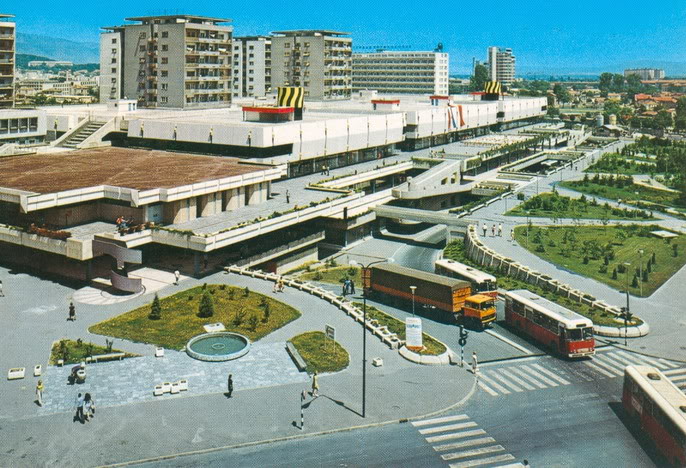
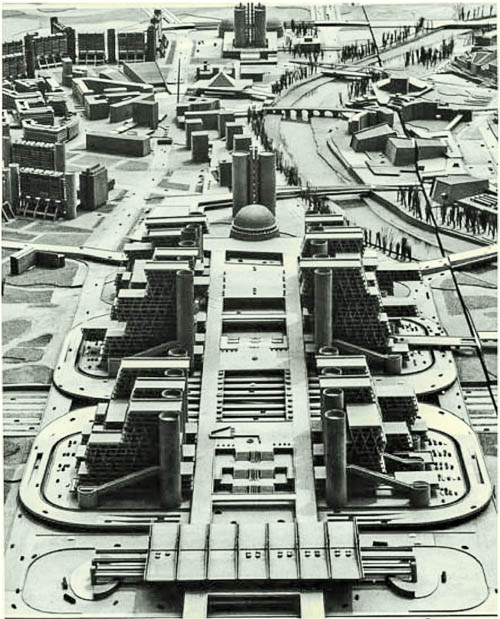
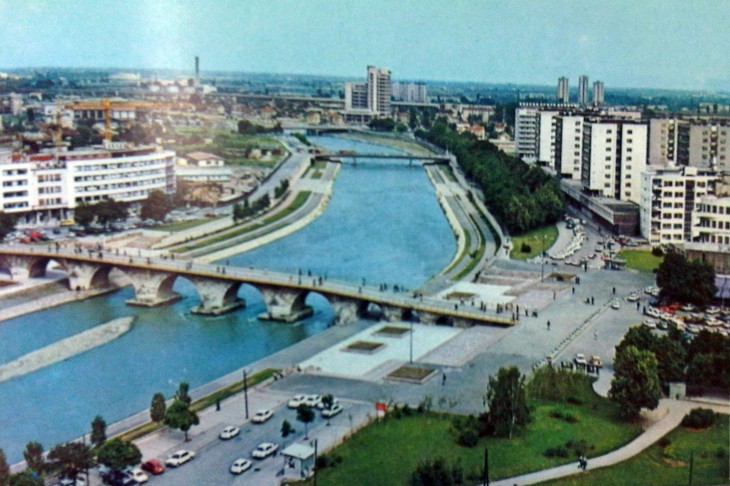
The architect chosen for this project was the UN competition winner, Japanese Kenzo Tange, who cooperated with the second place Yugoslavian architect Radovan Mischevik and Fedor Wenzler.
Tange’s concept was build up on two main urban symbols of the city. One the “City Gate”, based on the linear axis which included all public related functions from communication and business operations. The ending point of the linear axis was at Republic Square. The other mentioned was the “City wall”, wall of high-rise blocks surrounding the center, which can be seen from Vodno, the highest hill in Skopje. The idea behind, was that this two major elements, bring live back to the city. While working on the project for Skopje, Tange saw two possible approaches. The first one would “lean strongly in the direction of allowing the city to grow and alter in a dynamic and recurrent pattern’’, whereas with the second approach ‘’an ultimate form for the whole is designed on a virtually constitutional basis and all development is agreed with this form’’. Tange chose the second approach because he saw Skopje as a city which needed to establish a total image, around which the whole city would be reconstructed.
Fifty years later the government of the independent Republic of Macedonia devises a new master plan to change the look of the city, funny enough completely not following the plan on vision of Kenzo Tange. The Project Skopje 2014 was first presented to the public in 2010 and it consisted of numerous new monuments plastered all over the center of the city, new facades on historical architecture pieces, A Gate of Triumph, and many more, all revolving around the masterpiece set on the city square which would be the Fountain of Alexander the Great , leaving the square footage of the square to half of its original size. 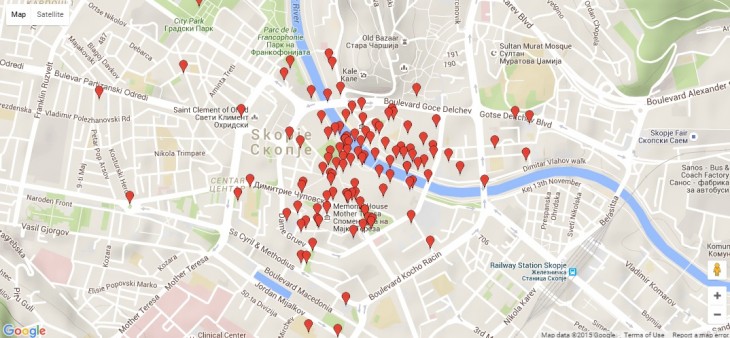
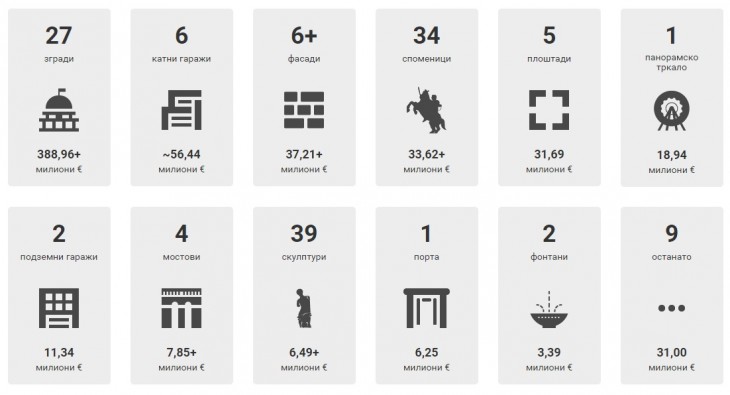
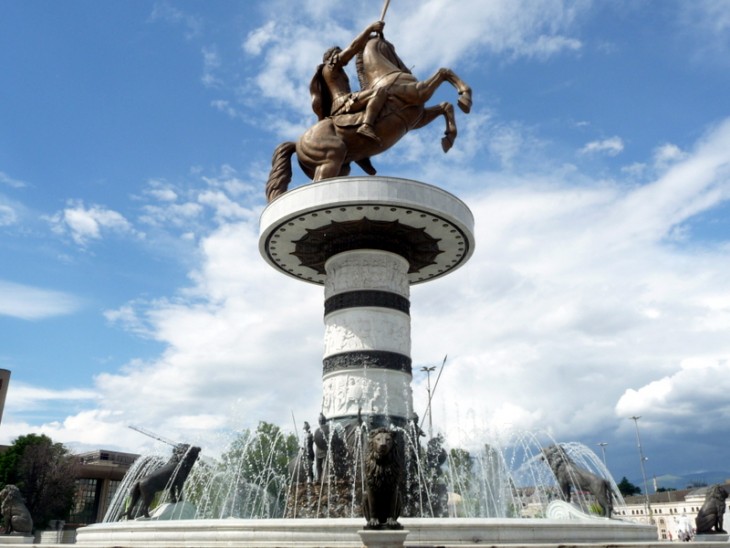
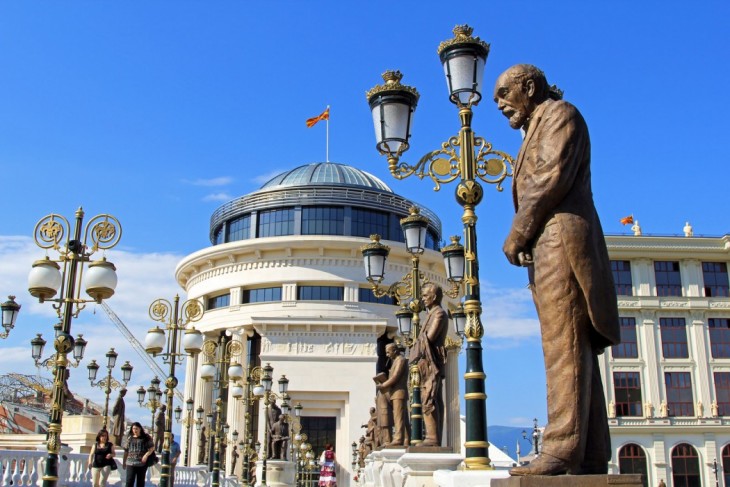
The project “Skopje 2014”can be seen from different perspective. The numbers refer that with 2.1 million population, unemployment 29,7% and inflation 2,8%, government spending concept was necessity. This concept is used for stabilization, business cycle inversion and growth. The main creator and investor was the Government of Macedonia, which left them a big field to play with, thus the project added new monuments and building as it progressed, getting the number of new objects to 136 from the originally promoted 40, and getting the budget up to 633+ millions of euros.
Government spending can be targeted to achieve a wide range of specific economic objectives, such as reducing unemployment, achieving more equity, action against poverty, and re-building city Centre, which is case in “Skopje 2014”. The disadvantage of this may be a considerable time-lag between spending and the benefits that arise. In trying to promote growth or reduce unemployment government spending can be inflationary, especially if the government has to borrow from the financial markets or if the spending is rising too quickly.
Regardless of the personal opinions of the project and the whole concept of government spending helped the economic growth or not it appear to be helping Macedonia to attract foreign tourists. There had been a 25% increase in foreign tourist visiting Macedonia in the first seven months of this year compared with the same period last year.
The year 2014 has come and gone, yet the project is still not finished. Hundreds of new objects later, and millions of dollars spent, the project begs the question whether it was meant for the better of the people of Macedonia, making the city a more desired destination, thus promoting better tourism, or if it is just a failed project which destroyed the looks of a once glorious city? Different opinions can be argued on both sides, but in my opinion placing too many objects on such a small playing field, suffocates the city and at the same time promotes history which was never part of our country.